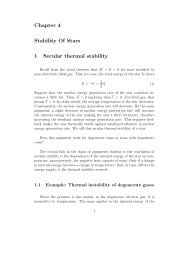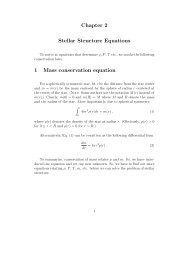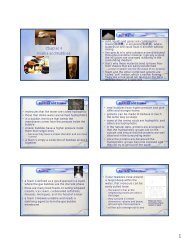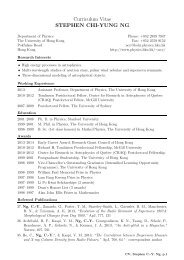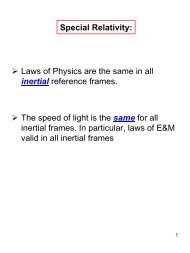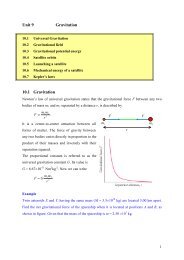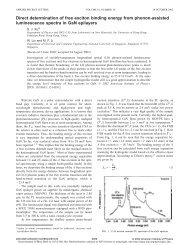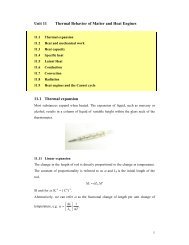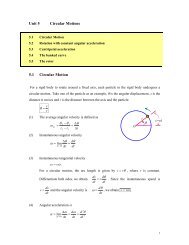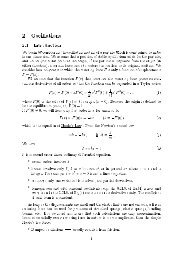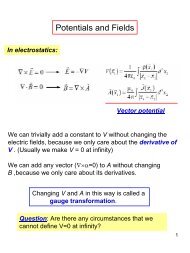here - Department of Physics, HKU
here - Department of Physics, HKU
here - Department of Physics, HKU
Create successful ePaper yourself
Turn your PDF publications into a flip-book with our unique Google optimized e-Paper software.
CHAPTER 2. SPECIAL RELATIVITY 12<br />
h<br />
Figure 2.4: A stationary light clock.<br />
rods aligned end to end), the moving length should also be doubled. Hence,<br />
the moving length is proportional to the proper length. Let it be αl, w<strong>here</strong><br />
the proportional constant does not depend on l, but in general depends on v.<br />
Just for easy visualization, suppose the length <strong>of</strong> our ruler is just αl. Then,<br />
the two ends <strong>of</strong> the rod touch the two ends <strong>of</strong> the ruler. All observers, no<br />
matter the velocities, will agree that the ends touch, although they may not<br />
agree on when and w<strong>here</strong> they touch.<br />
Now, in the rest frame <strong>of</strong> the rod, the ruler is moving to the left with<br />
speed v. On one hand, since their ends meet, the “moving length” <strong>of</strong> the<br />
ruler must be equal to the proper length <strong>of</strong> the rod, l. On the other hand, by<br />
the first basic premise <strong>of</strong> special relativity, the “moving length” <strong>of</strong> the ruler<br />
must be equal to α times its proper length, which is αl. We have<br />
l = α 2 l . (2.11)<br />
Since we are talking length, α must be positive, and α = 1. Transverse length<br />
does not change.<br />
2.4 Time Dilation<br />
The next important result we discuss is the time dilation: a moving clock<br />
will run slower. We will illustrate this effect by the following example.<br />
We consider a light clock as shown in Fig. 2.4. Two parallel mirrors are<br />
separated by a distance h. One unit <strong>of</strong> time is defined by the time taken for<br />
the light pulse to travel one round trip,<br />
t = 2h c . (2.12)<br />
Now suppose the clock is moving to the right with speed v relative to a<br />
stationary observer, Fig. 2.5. Let the time taken for the pulse to go back<br />
to the lower mirror be t ′ , as measured by the observer. Then, as shown in<br />
Fig. 2.5, since the mirrors have moved by a distance vt ′ , the distance traveled



